Photo by Fabian Oelkers on Unsplash
Sleeping Tips: Your Body and Sleep
Vital Sleeping Tips for Your Health: A Simple Fix for Improved Sleep
Sleep, as we all know, is vital for your health.
- It is important for your hormone function
- It’s also essential for controlling inflammation
- Integral to reset, recharge, repair of muscle tissue
- Allows for your skin to get those growth factors to repair damage and maintain elasticity.
If you want to be a high-performing individual, good quality of sleep helps you to perform well the next day cognitively and emotionally.
These tips are also for the health of your mitochondria, the powerhouses of your cell, and your immunity.
The Oura Ring
That is where the Oura ring comes in. It has been a game-changer to take my sleep to the next level and it is our first sleeping tip.
Being able to analyze my sleep cycles has helped me craft my day to perform better. It has also radically upgraded the quality of my sleep. I still have days that my sleep is not that great — but I am not second guessing it anymore.
Data and Planning
I now have data that is accurate and helps me plan my level of activity or what I can do more or less to increase the quality of sleep so I am recharged and refreshed for the day. It has also helped me realize that when I thought I had slept well based on just the number of hours, that didn’t tell much about the quality of my sleep. I now can track — how much deep sleep or REM sleep I was getting to perform to my highest ability the next day.
Moving towards improved sleep can be as simple as putting an Oura Ring on your finger. The Oura Ring is a new, best-in class tool that tracks your sleep metrics and provides you with data to optimize your sleep patterns.
Think of it as the next level accurate tracker for your sleep. It tracks your activity, heart rate, sleep quality, and sleep duration, amongst other metrics. By itself, having this information isn’t going to change the quality of your sleep. But it is an incredible tool that can help you identify causes of sleep disturbances and analyze how daily actions, food choices, and life events impact your sleep quality.
Although originally released in 2015, a new, more sleek-looking model of the Oura Ring was released in Spring 2018 and most recently a newer model released in 2021. In addition to looking better, the newest model is slightly more accurate and measures many of the same factors as the original.
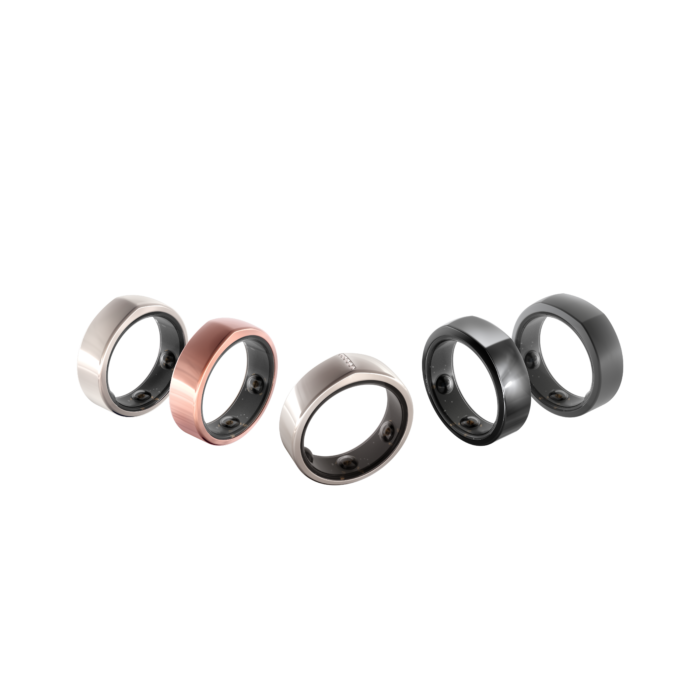
Monitoring Your Body
The ring measures key sleep factors through 4 pieces of technology: infrared LEDs, a 3D accelerometer, a gyroscope, and a body temperature sensor.
The infrared LEDs measure blood volume pulse directly from your fingers, just like pulse meters in hospitals. Heart rate is essential to measuring sleep quality, and can be used for metrics like heart rate variability. Heart variability is a particularly interesting metric, since it can actually be used to predict whether you’re getting sick or not! The light sensor in the ring captures 250 samples per second. This means the data it collects is highly accurate for measuring variability and other heart-related factors.
The 3D accelerometer and gyroscope allow the ring to track your movements — i.e. when your sleep is disturbed, when you’re active, and when you’re at rest during the day. Activity levels have a strong correlation with sleep, which is why it’s an important metric to measure.
The body temperature sensor does exactly what it sounds like — measure your body temperature. But it also establishes your personal base temperature and tracks when your temperature deviates. This can be an indicator of stress or sickness and correlate strongly with sleep latency and quality.
I have personally been curious about EMFs with wearable tech and have tended to avoid them for that reason. The newest version of the ring offers Wi-Fi enabled charging, which does release small amounts of EMFs during the ~80 minutes charge period. Otherwise, all EMFs have been eliminated from the ring. To allay any lingering concerns about EMFs, there’s also an option to set the ring to airplane mode. This mode allows the ring to track data without constantly uploading it to the app on your phone. To upload data, just turn airplane mode off, let the data load, and continue on!
Gathering Sleep Data
With all of the data it gathers, the ring evaluates key sleep factors:
- Total sleep — total amount of time you spend in light, REM and deep sleep.
- Efficiency – the quality of sleep you’re getting — the percentage of time you actually spend asleep after going to bed.
- Disturbances – how many times you woke up or had sleep disrupted
- REM Sleep – duration of the REM cycle – REM sleep plays an essential role in re-energizing your mind and body and making it an important contributor to your sleep quality.
- Deep sleep — duration of high-quality sleep — the most restorative and rejuvenating sleep stage, enabling muscle growth and repair.
- Sleep latency — how long it takes you to fall asleep
- Sleep timing — when you’re going to sleep and waking up
These factors help you identify your natural circadian rhythm. This then enables you to plan your sleep/wake cycle more effectively, can help you identify sleep disturbances, and predict when your sleep quality will be better or poorer.
Critical Insight
The data can also provide insights into how your daily life is affecting sleep. For example, maybe in using the Oura ring, you find that every night that you have two glasses, of wine, your heart rate goes up and the duration of your high-quality sleep decreases. Then you’ll know that drinking wine at night is directly impacting the sleep you’re getting. Similarly, you might find that on nights where you have lots of blue light exposure before bed, your sleep latency might be high, indicating that less blue light exposure might help you fall asleep faster.
It tracks your activity levels by analyzing:
- How long did you stay active during the day
- Whether you moved every hour
- Met daily targets
- Training Frequency
- Training Volume
- Recovery Time
It also tracks your readiness level and gives you a percentage which is based off your previous night sleep, sleep balance, precious day activity balance, body temperature, resting heart rate and recovery index. You can then make a decision based on how you feel and this additional input on what kind of activity you need for that day.
Personally, using the ring and these metrics has allowed me to dramatically improve the quality of my sleep and increase my general energy levels.
Implementing Interventions
Using the data provided by the ring, I’ve incorporated several new things into my daily (and nightly!) routines to improve my sleep quality, and been able to use the ring to measure those improvements. The first five strategies are non-negotiable for me, and the others are great complements:
- Be compassionate — if you’re experiencing insomnia or sleep disturbances – Instead of approaching it as a task — approach it with an inquiry mindset.
Sleep is a state of consciousness. Sometimes it is our ego that prevents us from letting go and leads us to a state of wakefulness. When you cease listening to the ego — sleep is available. It’s ok if you wake up at 3am, just as in meditation — don’t judge the mind. Witness what comes up — take a breath and practice a gradual relaxation by focusing on your breath or a sound or a sensation or whatever anchor comes easy to you release any feelings or emotions. An easy scan of the body — also known as yoga nidra helps the mind to drop into a resting state. - Grounding – walking barefoot to help reset the body’s natural electrical currents. When you walk barefoot on the Earth, there’s a transfer of free electrons from the Earth into your body that spread throughout your tissues. The effect is sufficient to maintain your body at the same negatively charged electrical potential as the Earth.
- Sunlight – UVB light waves for vitamin D synthesis. It can be a challenge in the winter – And that’s where Red light therapy is very helpful.
- Blue blockers — 2-3 hours before bedtime — to block blue light from electronics and screens. Blue light suppresses melatonin production, which is a hormone that helps you fall asleep, which is why it’s important to limit blue light exposure before bedtime.
- Red light therapy and Infra red Sauna – I use the Sauna space. Amongst other benefits of the infrared sauna health benefits is feeling relaxed – leading to a more restful sleep. Infrared sauna helps with thermoregulation before bed and puts the body in a parasympathetic state where the body rests and digests.
- Deep Breathing – Deep breathing can calm your heart rate, ease anxiety, and prepare you for sleep. I use inner balance and practice pranayama. 1. The 1:2 breathing practice — where you gradually increase your exhales until they are twice the length of your inhales, helps relax the nervous system and reduce anxiety and sleep disturbances. 2. I also practice Nadi shodhana ( alternate nostril breathing) – This practice calms the nervous system at the energetic level and opens an energy channel that quietens the mind. Place your right thumb over the right nostril and inhale through the left nostril and use the right finger to close off the left nostril. Lift your thumb and exhale out of the right nostril. Repeat breathing in through the right nostril and putting your thumb over your right nostril and exhale through your left nostril — that is one round. Do a few rounds in your bed as you transition into sleep.
- Movement – functional movement through the day and not working out at least 3 hours before bedtime.
- Going to sleep at a consistent time every night
- Castor oil packs
- Self-massage to calm your nervous system with ashwagandha oil- a powerful adaptogen that helps alleviate stress and anxiety
- Sleep induction mat — pressure points to relax. I use this one
- Work with an Acupuncturist
- Epsom salt baths as a part of a night ritual to relax your nerves
- Teaspoon of raw honey with ghee — the honey raises your blood glucose while you sleep and puts in a deeper sleep state faster. Your brain uses the carb at night and the raw honey replenishes this supply. The fats keeps your energy level stable for longer and that energy is used to sleep efficiently.
- Calming herbal teas — my favorites are teas that have these herbs — passionflower, chamomile, lemon balm, ashwagandha, tulsi. The ones I use – Traditional Medicine. My all time favorite is the Organic India – Tulsi Sleep Tea
- Optimal digestion – notice if you are having good bowel movement – atleast once or twice a day
- No kryptonite foods — sugar or processed foods.
- Supplements – as needed – Magnesium glycinate, Lemon Balm, L-theanine, Melatonin as needed, L- Ornithine, amino acid shown to improve sleep patterns.
- Amber bulbs to block out the while light that can disrupt melatonin
- Put your phone on airplane mode to avoid EMF’s which can disturb sleep. I also switch off my wifi router for the same reason.
The stages of sleep as Oura explains
“Deep sleep is the most restorative and rejuvenating sleep stage, enabling muscle growth and repair.
Sleep can be classifies into non-rapid eye movement and rapid eye movement(REM) sleep, which alternate in cycles throughout the night. Deep sleep or N3 is the deepest NREM sleep phase.
When you’re in Deep Sleep, your blood pressure drops, heart and breathing rates are regular drops, heart and breathing rates are regular, arm and leg muscles are relaxed and you’re difficult to awaken.
Deep sleep though it varies can make up anywhere between 0-35 5 of your total sleep time. On average adults spend 15=20 % of their total sleep time in Deep Sleep, the % usually decreasing with age.
Regular physical activity, avoiding heavy meals and alcohol before bed and long naps and caffeine in the afternoon can improve your chances of getting more deep sleep.
REM(rapid eye movement) is the final sleep stage — associated with dreaming, memory, consolidation, learning and creativity.
During REM your eyes move rapidly breathing is shallow and irregular, heart rate and blood pressure increase and your arm and leg muscles are relaxed.
Making up anywhere between 5-50 % of your total sleep time, the amount of REM can vary between nights and individuals. On average REM counts for 20-25 % of total sleep time of adults, and it usually decreases with age.
REM is regulated by circadian rhythms i.e. your body clock. Getting a full night’s sleep, sticking to a regular sleep schedule and avoiding stimulants in the evening may increase your chances of more REM.”
Some of my sleep metrics and how they reflect the effect of the some the things I’ve incorporated.
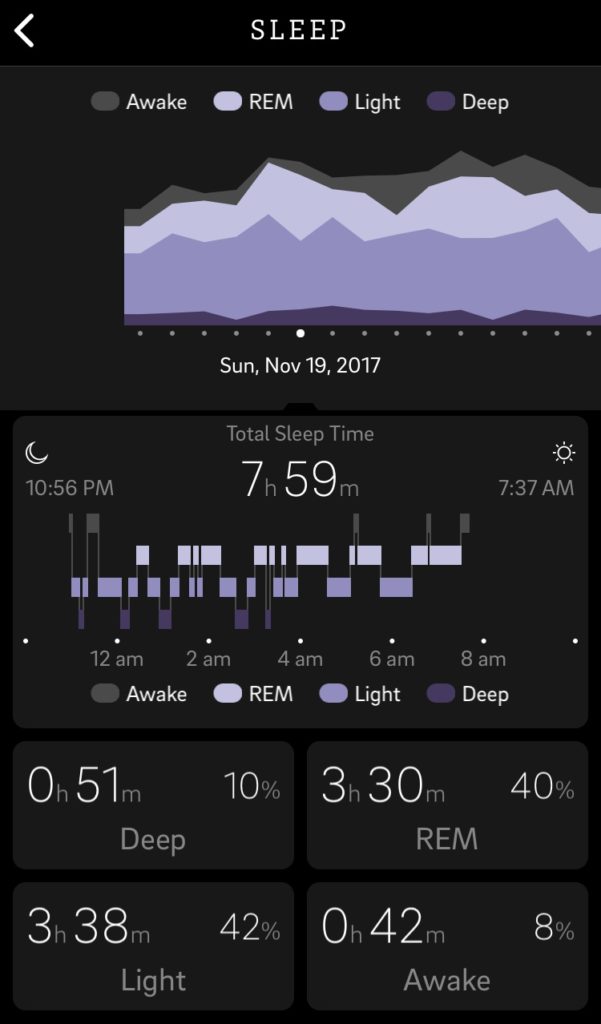
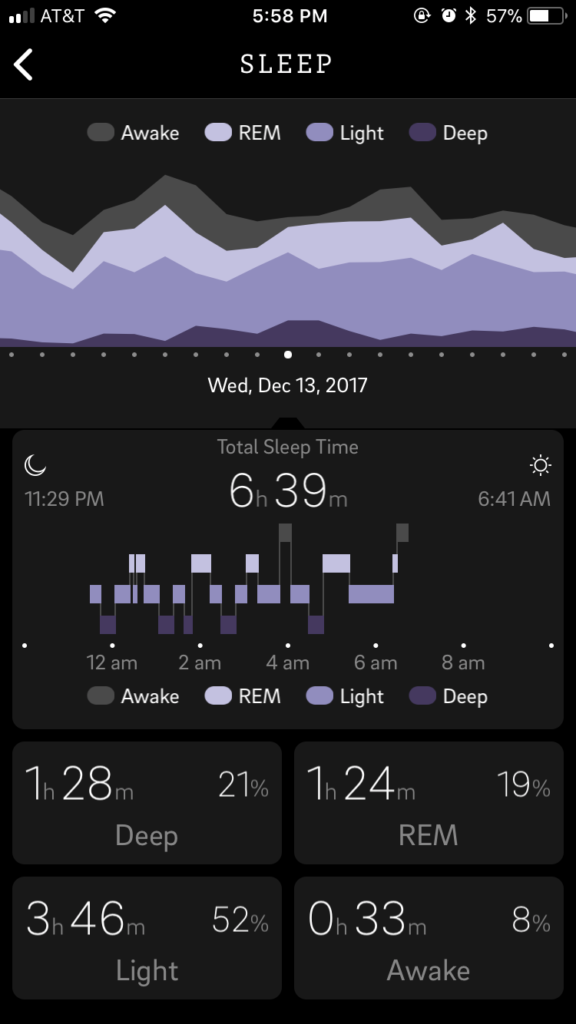
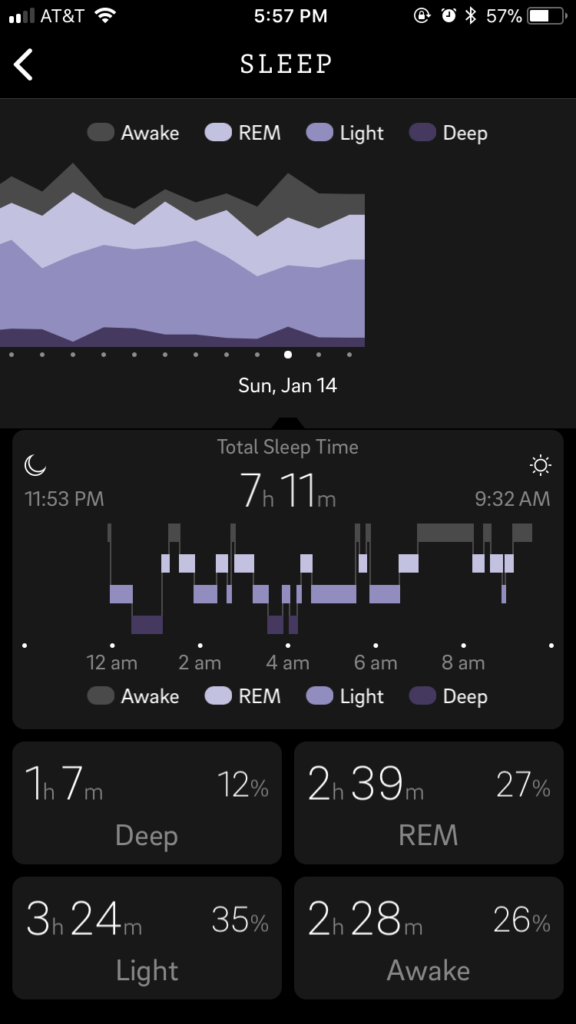
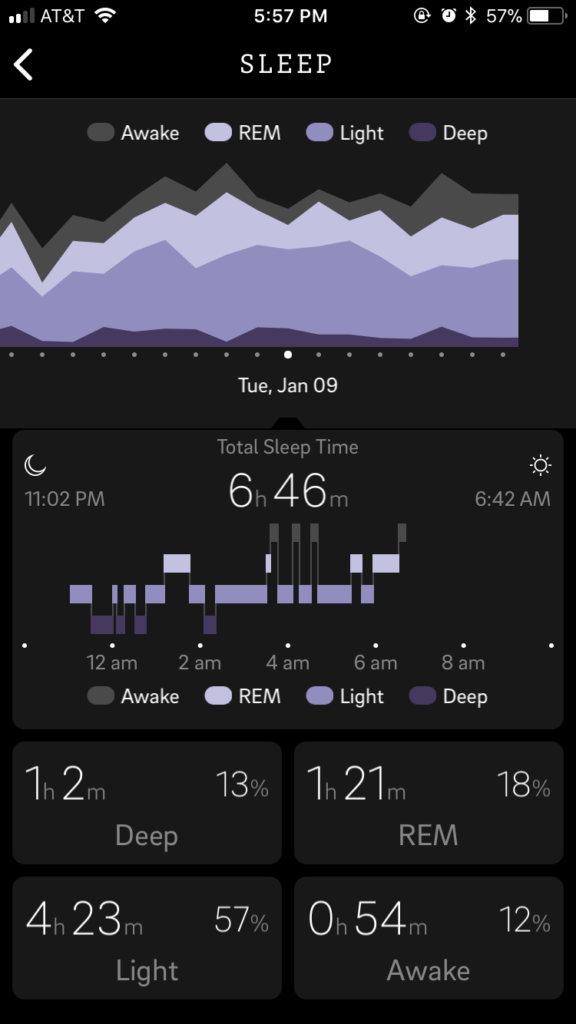
Conclusion
Consistently incorporating these interventions on this list has dramatically enhanced my deep sleep scores, indicating that my sleep is of higher quality from when I started using the ring– and I feel the results! Having a tool like the Oura Ring is incredibly valuable if you’re willing to experiment with making changes to improve your sleep scores!
As its bank of user data grows, Oura will continue to constantly update its software and offer better and more specific recommendations to users over time, helping users to optimize sleep and overall health.
Like to ask you more questions later please.
Happy to – email me at radhika@holisticprana.com